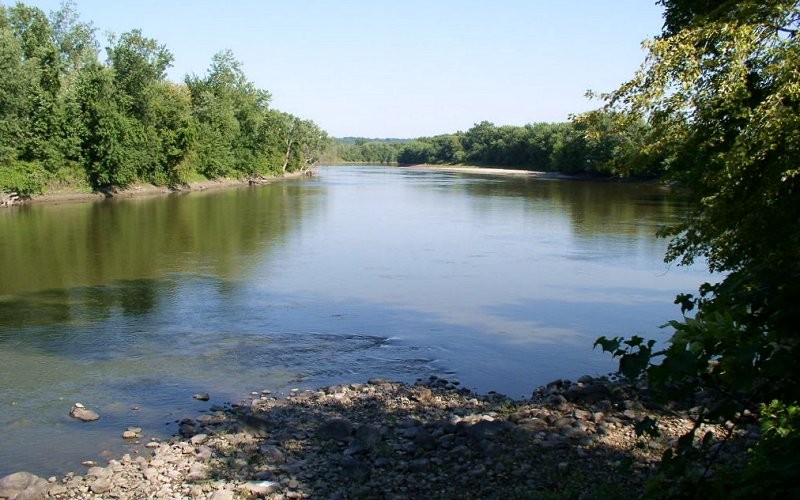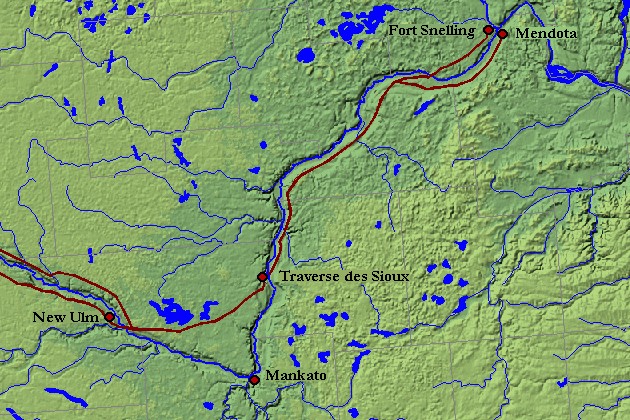Traverse des Sioux
Introduction
Text-to-speech Audio
Images
The river at Traverse des Sioux.

Map of the Minnesota River. The red line marks a trail that veers northward and crosses the river at Traverse des Sioux.

Backstory and Context
Text-to-speech Audio
The word "traverse" is the French word for crossing and this was an appropriate name as the site was a fording point for Native Americans and fur traders. The river flows southeasterly to Mankato then head northwards, passing the park. Over time the site became a well established community of fur traders as well as those of interracial heritage—mixed bloods.
The government agreed to pay the tribes in large installments over time. After the treaty was signed, the tribes asked for a second copy and then received a third. However, the third was not a copy at all, but rather documents listing claims by traders and mixed bloods against the tribes; the documents also stated that these claims would be funded by the money the tribes would receive. The tribal leaders, not knowing English, were tricked into believing that the third "copy" was indeed that. This deception was one of the factors that led to the U.S.-Dakota War of 1862 that lasted from August to December of that year. Thirty-eight Sioux were hanged in the largest mass execution in U.S. history and the government terminated the Sioux's Minnesota reservations in 1863.
Sources
https://en.wikipedia.org/wiki/Traverse_des_Sioux https://en.wikipedia.org/wiki/Treaty_of_Traverse_des_Sioux Diana Mitchell. "Traverse des Sioux State Park," National Register of Historic Places. 3-20-73.
Minnesota Historical Society. Traverse des Sioux. Accessed April 15th 2020. http://www.mnhs.org/traversedessioux.
